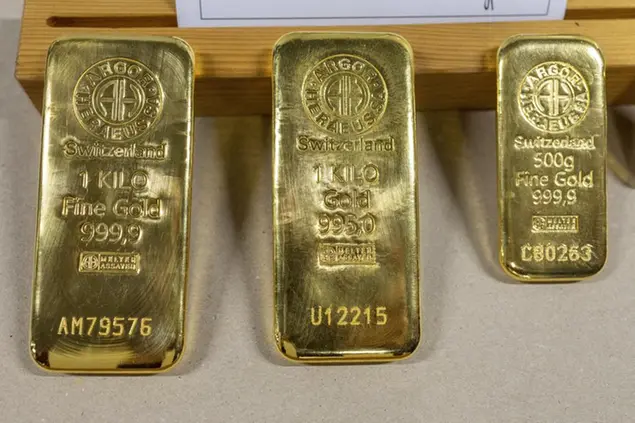PHOTO
Gold prices fell nearly 2% on Friday after data showed China's central bank held off gold purchases in May following 18 consecutive months of buying.
Spot gold fell 1.8% to $2,333.69 per ounce as of 1123 GMT. Bullion reversed nearly all its weekly gains after the data and is now up only 0.3% so far this week.
The People's Bank of China (PBOC) did not add to its strategic reserves for first time since October 2022. It held 72.80 million troy ounces of gold at the end of May, unchanged from the end of April.
Gold prices hit a record $2,449.89 per ounce on May 20, and in the cocktail of factors rallying bullion, a primary driver was strong central bank demand, primarily from China.
This, following only a very small increase in April, was almost certainly the trigger for the price fall, StoneX analyst Rhona O'Connell said.
However, O'Connell noted there has been more than one occasion in the past when the PBOC has not reported any change in gold reserves for an extended period and then has released figures showing a quantum leap, like before May 2009, when after a steady 600t, reserves abruptly rose to 1,054t.
"China is nowhere near done buying gold," said Ole Hansen, head of commodity strategy at Saxo Bank.
Markets are looking at U.S. nonfarm payrolls data due later today, where growth is likely to be below analyst forecasts.
"If we get a weak jobs report today and with that increased focus on US rate cuts, we could see ETF investors pick up the baton that the PBOC, temporarily, in my opinion, has dropped on the floor," Hansen said.
A run of weak macro data this week added to signs that inflation was cooling and that the Fed would start cutting rates as early as September.
Lower rates reduce the opportunity cost of holding non-yielding bullion.
Spot silver fell 2.9% to $30.39 per ounce, platinum was down 1.3% at $989.55, and palladium lost 1.1% to $919.50.
(Reporting by Harshit Verma in Bengaluru; Editing by Tasim Zahid and Alexander Smith)
